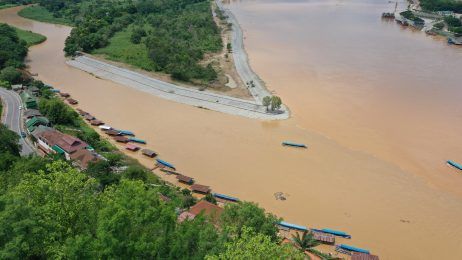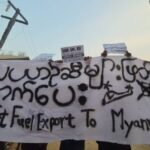
Toxic Fallout: Myanmar’s Rare Earth Mines Pollute Thai Rivers
Rare earth mining in Myanmar’s Shan State is causing a growing environmental crisis in northern Thailand. Contaminated water from mining sites has polluted key Mekong River tributaries — the Kok, Sai, and Ruak — turning them orange-yellow and pushing arsenic levels far above safe limits.
Thai officials have confirmed the source of the pollution is rare earth operations in Mong Yawn, near the Thai border, controlled by China-backed militias. These mines are run with little oversight in conflict zones beyond the reach of Myanmar’s military.
The toxic runoff is damaging northern Thailand’s agriculture, fishing, and tourism, with estimated losses of over $40 million per year. Communities along the rivers have declared them unsafe and unfit for consumption or fishing, sparking widespread protests and calls for immediate action.
Activists and scientists are urging the Thai government to pressure China to rein in its companies operating in Myanmar. China now relies on Myanmar for over half of its rare earth imports, after environmental laws at home pushed mining across the border.
Despite some regional meetings and minimal government efforts — like plans to install underwater barriers — experts say only shutting down the mines can stop the pollution. The threat extends far beyond Thailand: arsenic contamination could reach Cambodia and the South China Sea.
Environmental groups across the region are calling for urgent cross-border cooperation. They warn that unless decisive action is taken, this could become one of Southeast Asia’s most serious ecological disasters.
Related posts:
 Myanmar’s December 2025 Elections: A Carefully Engineered Trap, Not a Genuine Political Transition
Myanmar’s December 2025 Elections: A Carefully Engineered Trap, Not a Genuine Political Transition
 Myanmar Earthquake – A Nation in Crisis Amidst Disaster
Myanmar Earthquake – A Nation in Crisis Amidst Disaster
 The Fuel Behind the Fire: Jet Fuel’s Role in Myanmar Military Airstrikes
The Fuel Behind the Fire: Jet Fuel’s Role in Myanmar Military Airstrikes
 Myanmar Refugees in Thailand Face Uncertain Future as Aid Decreases
Myanmar Refugees in Thailand Face Uncertain Future as Aid Decreases
 Myanmar announces formation of new union government
Myanmar announces formation of new union government
 MYANMAR’S EXILED GOVERNMENT SLAMMED FOR INERTIA
MYANMAR’S EXILED GOVERNMENT SLAMMED FOR INERTIA
